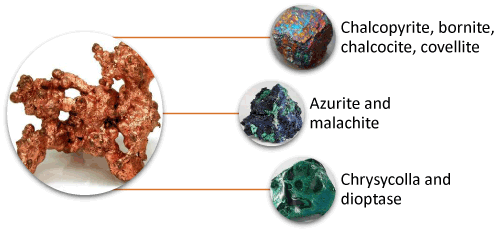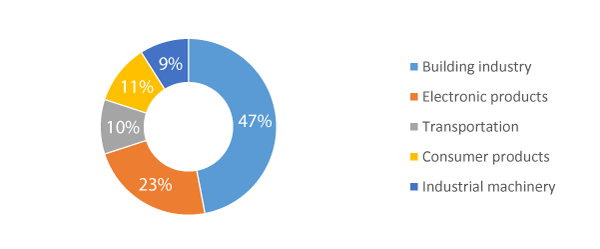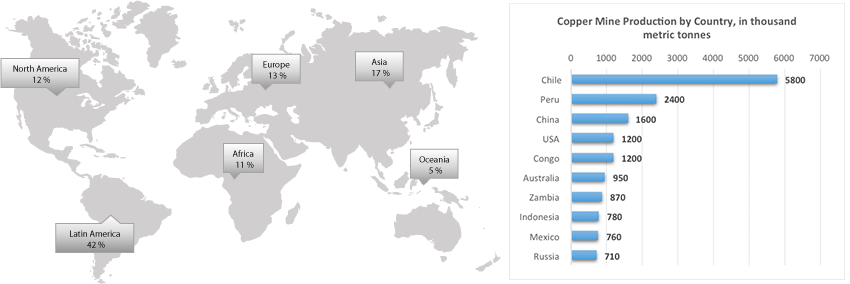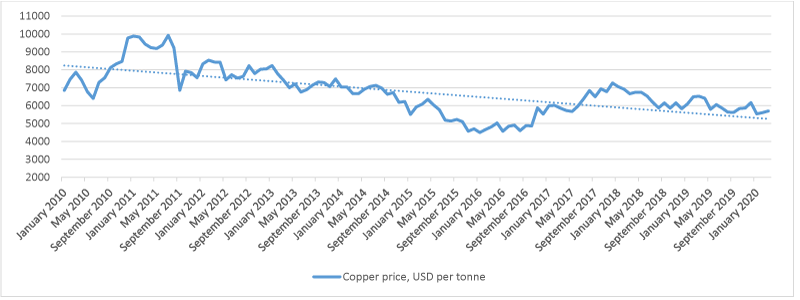Copper
Copper is a flexible metal of golden-pink color, is one of the first extracted and used by humans. It has been known since 8000 BC and used for making coins and ornaments. The discovery that copper alloyed with tin produces bronze marked the beginning of the Bronze Age at about 3000 B.C. It is one of the most recycled element. Recycling copper extends the efficiency of the metal usage, results in energy savings and contributes to ensuring that we have a sustainable source of metal in future. Copper deposits naturally in the Earth’s crust in different forms: sulfide deposits (chalcopyrite, bornite, chalcocite, covellite), carbonate deposits (azurite and malachite), silicate deposits (chrysycolla and dioptase) and pure copper.

The demand for copper has always been high. It is expected that it will continue to be met by the discovery of new deposits, technological improvements, efficient design, and by taking advantage of the renewable nature of copper through reuse and recycling.
Copper contributes greatly to the national economies of both developed, newly developed and developing countries. Mining, processing, recycling and the transformation of metal into a multitude of products creates jobs and generates wealth. These activities contribute to building and maintaining a country's infrastructure, and create trade and investment opportunities.
Physical characteristics:
Copper is actively used in the industry due to its perfect ductility, malleability, thermal and electrical conductivity and corrosion resistance. Copper is one of the most electrically conductive metal in the world, therefore it has become an integral component of telecommunication networks. Prices for copper correlate with the dynamics of the world economy.

Application of copper:
Copper and copper based alloys are used in a variety of applications that are necessary to maintain a certain standard of living. The largest end use for Copper is in the building industry. Thanks to its physical features – copper is widely used for the following purposes

- Electrical wiring
- Heating systems
- Cladding
- Rainwater systems
- Water pipes and fittings
- Coins
- Oil and gas lines
Copper production
According to Copper Development Association – the demand for copper is growing. In the next 20 years alone, an increase of up to 50 percent is expected, and this growth is part of a broader trend. In comparison to aluminium the leading producer of copper is Chilly. The leading countries by copper mine production:

* Source ICSG
Copper quotation
The general dynamics of the copper price resembles the overall trend on non-ferrous metals market. You may find the quotations of LME futures in USD per tonne below:
